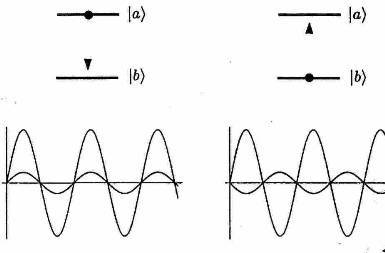
M.O. Scully, M.S. Zubairy. Fig 5.6. Constructive and deconstructive interference of stimulated radiation with external radiation.
M.O. Scully, M.S. Zubairy. QUANTUM OPTICS. 1997
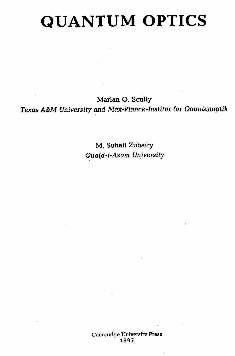

Marlan O. Scully
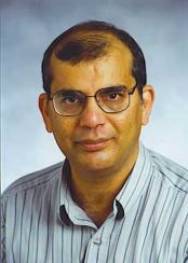
M.Suhail Zubairy
W.E.Lamb, M.O.Scully
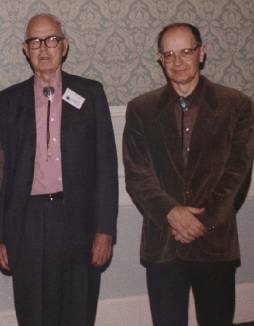

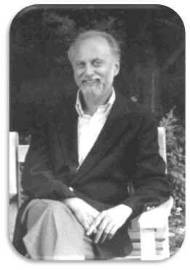
George Greenstein
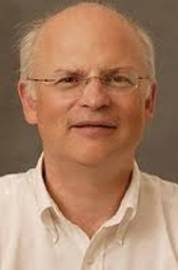
Arthur G.Zajonc
«QUANTUM JUMPS» – THE PREJUDICE OF THE EARLY QUANTUM THEORY. L.Regelson
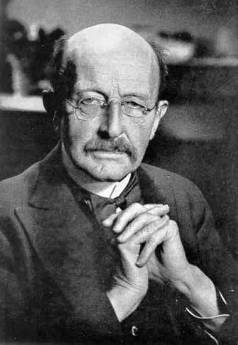 If electron as a whole "jumps" from one level on another then «Planck's paradox» should be valid – impossibility of registration of weak radiation by the quantum detector – accumulation of energy hν by atom needs too much time.
If electron as a whole "jumps" from one level on another then «Planck's paradox» should be valid – impossibility of registration of weak radiation by the quantum detector – accumulation of energy hν by atom needs too much time. Planck has pointed out the following paradox connected with registration of electromagnetic radiation by the quantum detector.
Let's assume that for observation the photo multiplier with potential of an exit of photocathode U(ν) is used and that one emitted electron collects energy of radiation from the area of interaction Sо equal to the area of an external shell of atom. Time of accumulation of energy hν = еU(ν) by atom may be defined as
t = hν/JSo
A limit of sensitivity of modern quantum detectors is about J = 10(-22) w/sm(2), hν = 2эв = 3,2х10 (-19) j, Sо = 10(-16) sm(2), thus we have for a signal waiting time absurdly great value
t ≈ 3х10 (19) сек
But experimental average time interval between two photocounts by such intensity of radiation is on 14 degrees lower.
So-called «reduction of wave function» at the moment of registration, according to Copenhagen treatment of quantum mechanics, occurs not in reality but only in consciousness of the observer and this mental reduction in any way does not explain how the energy of radiation distributed on great space can be concentrated in the volume of individual atom.
Now we will show, that all this reasoning is based on incorrect preconditions and completely loses force in the modern theory of interaction of radiation with atom.
Under the action of monochromatic external radiation field the two-level system begins to oscillate with Rabi frequency
Ω = Ed/ћ (1)
where E - amplitude of a field, d - dipole moment between two levels.
Population of top level (under condition of an exact resonance of an external field with a difference of frequencies between levels) is defined as (see, e.g. [1] §5.2.1):
W = sin(2)(Ωt/2) (2)
By these transitions atom exchanges energy with an external field: in the first half-cycle atom takes away energy from a field, in the second – gives it back. It occurs because by transition from top to down, the induced radiation is in phase with external radiation, and by transition from below upwards – in an antiphase with it (Fig. 1). Any "instant jumps" of electronic density thus does not occur, contrary to those notions which have used in the first stages of development of quantum theory. Transitions of electronic density between stationary states are gradual and continuous.
Transitions downwards occur not only under the influence of external field, but under the influence of fields of surrounding atoms (collision) or vacuum field (spontaneous transitions). Overwhelming part of such transitions are thermal relaxation when energy of top level has been transferring nonradiatively to surrounding atoms. Registration of radiation by the detector can take place only in those infrequent cases, when transition downwards occurs with radiation of photon (wave train) incoherent to external field, or with separation of an electronic cloud from atom (photoeffect).
Let's consider the «Planck's paradox» from these positions.
When the front of radiation reaches the detector surface, simultaneous oscillation of all atoms begins with Rabi frequency. Owing to emerging of the exited states, there arises a certain probability of registration acts which is proportional to product of average density of population of top level Wav on number of the exited atoms n.
Р ~ Wav n (3)
Planck considers a case when Е is very small: in this case Rabi frequency will be very small too, i.e.
Ωτ <<1 (4)
where τ – the time of thermal relaxation, in a solid body having an order 10(-13) sec.
Thus, by small intensity of external radiation, top levels have time (the time of thermal relaxation) to get population only of insignificant small value.
According to (2), average density of population of top level can be estimated as
Wav ≈ [Ωτ](2) (5)
Accordingly, from the exited level only such part of electronic density can be torn off which is on this level. Accordingly, if secondary radiation is registered, integral intensity emitted train will be proportional to density of of top level population. However the frequency's conditions of photoeffect will remain valid.
Thus, in each individual act of registration the electron or photon train of very small integral intensity participates, in comparison with integral from |ψ|² for completely populated level.
However, thanks to the big number of atoms n, which simultaneously interact with falling radiation, the number of counts N(t) during observation time t is great enough and is defined by the integrated relation following from the law of energy conservation:
N(t) = η JSt/hν (6)
where J – intensity of falling radiation, S - the working area of the detector, η - quantum efficiency of the registration device. An average time interval tav between the subsequent readouts (provided that tav much less than resolution time of device), may be defined by assuming N (t) = 1. Then for J = 10(-22) w/sm² and hν = 2 эв, we will receive tav ≈ 10(5) сек. This value defines the threshold sensitivity of the detector limited by the minimum achievable speed of counts of noise impulses.
Conclusion: no paradox in registration of superweak radiation by the quantum receiver actually exists.
The seeming paradox is caused by the erroneous assumption (generally accepted on the early stages of quantum theory), that each time in the individual act of registration the "whole" electron or photon train participates with full energy ћω whereas trains with energy Wav ћω are actually registered with Wср <<1. Therefore, contrary to Planck's reasoning, there is no necessity for accumulation energy ћω in volume of individual atom. However for average time of a thermal relaxation τ the atom has time to borrow from falling radiation the energy Wav ћω which may be transferred to detector in the act of registration.
We will underline once again, the resonance conditions or frequency border of photoeffect are connected only with ω whereas the value Wav does not influence these conditions in any way.

